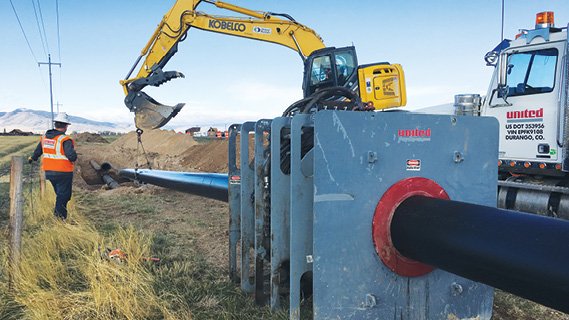Older pipelines can pose a host of issues for potable water infrastructure. Assessment of a 20-inch coal tar-coated internally lined steel drinking water transmission pipeline built in the mid-1940s in Laramie, Wyoming, resulted in the need for rehabilitation. While the coating posed no health risks according to the Wyoming Department of water quality, after nearly 70 years of service, the client sought to rehabilitate the line to create a barrier between the coal tar coating and the city’s drinking water.
Located along Highway 230 on a right-of-way regulated by the Wyoming Department of Transportation (WY-DOT), the pipeline transports water from Laramie’s water treatment plant down to the city below, losing roughly 2,000 feet of elevation along the way. Any solution Laramie would use to rehabilitate the line would require WY-DOT approval and permitting. Because of scheduling challenges posed by seasonal flow variation and the 18-mile length of the line, the city expected the project would need to be completed in three phases over three years.
Click here to view more detailed information.

